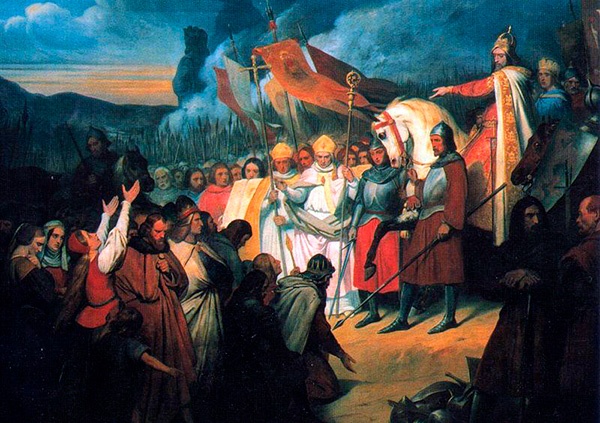
Some people believe that Europe is undergoing a process of Balkanisation, although the continent’s regionalisation might in fact be something positive, combining unity and diversity. Matthew Karnitschnig in Politico recently warned about Europe becoming what he called ‘EUgoslavia’, hastened by Brexit. In a Union of 28 (27 without the UK) very heterogeneous states, however, such regional groupings seem not only inevitable, but even laudable, as long as they partake in a significant shared base (an internal market, trade policy, competition, cohesion policies, a minimal shared social policy, some shared elements of foreign and security policy, democratic standards, European citizenship, etc, and an inspiring joint project that is currently absent). It also needs to be grounded in a general sense of solidarity, and not on a confrontation between north and south, or east and west, debtors and creditors or those with a trade surplus against those with a deficit, to mention just a few of the fault lines. This is part of the complexity inherent to this Union, which is to some extent self-conscious about having failed to become the United States of Europe given its inability to build itself into a federation. But it has nevertheless achieved a great deal.
The size and diversity of the EU, which has done nothing but grow geographically and in terms of competences, requires a greater flexibility. For instance, in the way it operates, as in enhanced cooperation and other mechanisms, such as that paving the way to the Schengen regime. The latter extends beyond the EU into Norway and Switzerland, although excluding the UK and Ireland, and is now being questioned by certain Europhobes. But the Europe of joint defence, like other ‘new Europes’, will not be achieved by all 27 member states, but rather by those who are both willing and able.
There are other relevant dimensions, but the geographical one is important and favours alliances. The others should not, nevertheless, induce fear. Underlying Ortega y Gasset’s Meditation on Europe (originally a lecture delivered in Berlin in 1949), as well as The Revolt of the Masses, where he had previously broached the topic in 1929-30, was the idea of Charlemagne’s Europe, and hence (and because they lay at the root of three wars –in 1870, 1914-18 and 1939-45–) the importance of the so-called Franco-German axis. The latter is not what it once was, but it does remain necessary, although it is not strong enough to lead the EU into its new phase.
We are no longer in Charlemagne’s Europe. Over the course of the continent’s history, regional subgroups have emerged in what is today the EU. First there was Benelux, comprising Belgium, the Netherlands and Luxembourg. That union persists, but its vision of Europe is no longer coherent given the differences that have arisen with the Netherlands, where enthusiasm for Europe has waned.
At the outset of what became the EU a clause was designed for the fledgling union, the so-called ‘Benelux clause’ (now Article 350 of the Treaty of Functioning), allowing regional associations on condition that their goals go beyond those of the Union. It gave rise to anomalies, however: Luxembourg lacked a central bank (the Belgian central bank filled the bill) and it had to create one to join the euro.
It is also clear that Belgium’s internal structure has become a problem for Europe, as we have seen from the action taken by the parliament and Minister-President of Wallonia, the socialist Paul Magnette, which has halted the CETA deal between the EU and Canada. Not even the European Council has been able to twist their arms, due to the powers possessed by the region in a country that has gone from being a federation to a quasi-confederation. Nevertheless, it should be borne in mind that the federal German government had to consult the federated regions, the Länder, about the treaty. But a Europe of regions, the emergence of groupings among the countries of Europe, is not the same thing as internal regionalism within countries, which is perfectly understandable and reasonable. However, when taken to the extremes of Wallonia, it can end up paralysing an EU that is already complex enough. Although they share a certain amount of terminology, they are completely distinct phenomena.
There are other regional groupings in the EU, both formal and informal: between the UK and Ireland (which will be affected by Brexit); between the countries of the Visegrad Group (Hungary, Poland, the Czech Republic and Slovakia), now with a more Eurosceptic stance and outside the euro; France, Germany and Poland, that make up the Weimar Triangle, with regular summits; the Nordic countries, including Norway and Iceland (outside the EU), and Denmark, Sweden and Finland (all inside the Union, the latter in the euro), which coordinate with each other constantly and have their own Nordic Council; there is even backing for the Baltic States, which form another clear group. A new forum emerged from the meeting of Greece, Italy, France, Spain and Portugal held in Athens in September, the UEMed, although the countries of the south are reluctant to recognise themselves as such, despite that fact that it would be useful in the reconfiguration of Europe. For its part, China occasionally convenes the countries of the EU’s eastern flank.
More diversity requires more flexibility and, above all, more solidarity, both internal and external. And this is sometimes found wanting, as in the distribution of refugees. But Spain and others –as full members of NATO– send aircraft to patrol Baltic airspace, and similarly those in the north should be much more concerned about the risks and threats that loom from the south, not just out of solidarity but also because it will end up affecting them.
It is true that in this context it is much more difficult to reach broad consensuses. But this is a much more complex Europe than that of the six founding members. According to the thoughtful American Anne Marie Slaughter, the EU should see itself as ‘the world leader in creating a new political form: a regional co-operative order that provides unity and flexibility, an organism that can act simultaneously together and apart’.
E pluribus unum (‘one from many’ and hence ‘unity from diversity’) was the motto that the US chose to feature on the first dollar bills and that the EU should not only have appropriated for itself, but should have interpreted and implemented after its own fashion.


